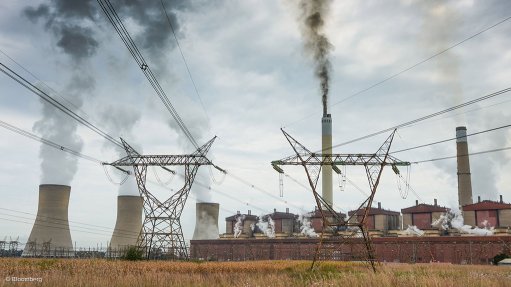Stats SA has overestimated agriculture’s GDP decline last year, says think tank
Independent think tank, the Bureau for Food and Agricultural Policy (BFAP), believes that the year-on-year (y-o-y) decline in the country’s agricultural sector gross domestic product (GDP) last year, as reported by Statistics South Africa (Stats SA), is seriously in error. BFAP analysed the available data in its latest brief report, 'Perspectives on Agricultural Performance in Q4 of 2023'.
Stats SA reported that the sector saw a drop in GDP of 12.2%, while BFAP’s analysis indicates that it was less than half, perhaps even only one-sixth, of this. (South Africa’s total GDP grew by 0.6% in real terms, last year, according to Stats SA.)
The BFAP pointed out that, since agricultural GDP statistics started to be compiled in 1946, there have been only eight occasions on which a y-o-y decline of more than 10%, in real terms, has been recorded by the sector. The last was in 1995, owing to a severe El Niño-effect drought (which followed only three years after the 1992 Southern African drought).
“The agricultural sector experienced a difficult year [last year], with significant producer price declines in major subsectors such as grains, oilseeds and beef, along with reduced volumes in several horticultural industries and the poultry sector,” stated the think tank in its report. “While BFAP was expecting a decline in agricultural GDP, given the extent of challenges such as delays in the ports, animal disease, and weak consumer spending power, the magnitude of the decline was a surprise.”
South African agriculture is divided into three subsectors – animal products, field crops, and horticulture. Animal products accounted for 53% of total farm output last year, field crops were responsible for 22% and horticulture for 25%. In y-o-y terms, while nominal gross value of production for field crops dropped by 10%, that for animal products increased by 2% and that for horticulture rose by 10%.
The BFAP examined input costs, production volumes, and price fluctuations for all three subsectors. And it did the same within these subsectors (for example, for chicken and cattle, within animal products, and wheat and canola, within field crops).
Using data from the Department of Agriculture, Land Reform and Rural Development (DALRRD), the BFAP concluded that gross farm income declined, in real terms, by 3.05% last year. This would mean that the 12.2% decrease reported by Stats SA for the agricultural sector would have had to be the result of increased farm input costs, whether higher input prices or the consumption of greater amounts of these inputs. But the costs of key inputs such as fertilisers, feed and chemicals decreased “significantly” last year. DALRRD data showed that farm input prices in general fell by some 3.6% in 2023.
This left increased use of inputs as the only source of the reported 12.2% fall in sectoral GDP. That implied that agriculture physically used 17% more inputs last year than in 2022. Animal feed purchases by farmers would have had to increase by 13.2%, but half the animal feed produced in the country goes to the poultry industry, which suffered from a severe outbreak of avian flu in 2023. Further, for the first 11 months of last year, total South African feed output volume declined 1%, y-o-y, according to the Animal Feed Manufacturers Association.
Likewise, Stats SA showed spending on fertiliser increasing by 22% last year, but DALRRD reported that fertiliser prices fell by 14.4%. To account for the spending increase, the volume of fertiliser used by famers would have had to increase by 42%, y-o-y.
“BFAP’s best estimate of the real agricultural GDP for 2023, using a manual adjustment of different input expenditure items in line with our own projections and information received from within the industry, is in the range of -2% to -5%, depending on which deflators are used to get from nominal to real values,” stated the report. “The evaluation of the agricultural GDP and the estimates of actual performance do not negate the fact that the sector experienced a difficult year, with abundant challenges along with declining prices in some sectors and reduced volumes in others. BFAP has noted its expectation of a contraction in 2023 since the first quarter, but correct quantification of the magnitude of the decline is critical, given that it informs budgeting and policy-planning.”
Article Enquiry
Email Article
Save Article
Feedback
To advertise email advertising@creamermedia.co.za or click here
Comments
Announcements
What's On
Subscribe to improve your user experience...
Option 1 (equivalent of R125 a month):
Receive a weekly copy of Creamer Media's Engineering News & Mining Weekly magazine
(print copy for those in South Africa and e-magazine for those outside of South Africa)
Receive daily email newsletters
Access to full search results
Access archive of magazine back copies
Access to Projects in Progress
Access to ONE Research Report of your choice in PDF format
Option 2 (equivalent of R375 a month):
All benefits from Option 1
PLUS
Access to Creamer Media's Research Channel Africa for ALL Research Reports, in PDF format, on various industrial and mining sectors
including Electricity; Water; Energy Transition; Hydrogen; Roads, Rail and Ports; Coal; Gold; Platinum; Battery Metals; etc.
Already a subscriber?
Forgotten your password?
Receive weekly copy of Creamer Media's Engineering News & Mining Weekly magazine (print copy for those in South Africa and e-magazine for those outside of South Africa)
➕
Recieve daily email newsletters
➕
Access to full search results
➕
Access archive of magazine back copies
➕
Access to Projects in Progress
➕
Access to ONE Research Report of your choice in PDF format
RESEARCH CHANNEL AFRICA
R4500 (equivalent of R375 a month)
SUBSCRIBEAll benefits from Option 1
➕
Access to Creamer Media's Research Channel Africa for ALL Research Reports on various industrial and mining sectors, in PDF format, including on:
Electricity
➕
Water
➕
Energy Transition
➕
Hydrogen
➕
Roads, Rail and Ports
➕
Coal
➕
Gold
➕
Platinum
➕
Battery Metals
➕
etc.
Receive all benefits from Option 1 or Option 2 delivered to numerous people at your company
➕
Multiple User names and Passwords for simultaneous log-ins
➕
Intranet integration access to all in your organisation

















